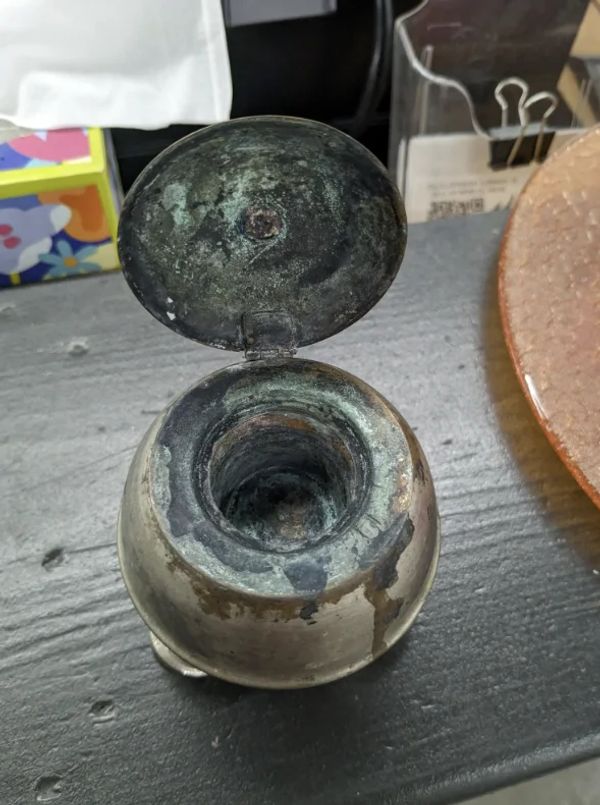As I wandered through the winding aisles of a local thrift store, filled with remnants of days gone by, my eyes were captivated by a charming silver object that seemed to hold secrets from another era. Resting on three ornate feet, this small, lidded vessel stood as a silent sentinel among the forgotten bric-a-brac. With a mix of reverence and curiosity, I reached out and felt its surprising weight, and the gentle clink of the lid revealed its purpose: an inkwell used in a time when ballpoints and keyboards were yet to exist.

An inkwell was an essential tool for anyone who wished to put their thoughts to paper in the days before modern writing instruments. This particular inkwell, most likely paired with a feathered quill or a delicate dip pen, served as a reservoir of ink, the very lifeblood of communication. Inside, I discovered a lining made of glass or porcelain, a careful design to protect the ink and prevent the metal exterior from corrosion. The inkwell was weighted at the bottom, a thoughtful detail to ensure it stayed upright and didn’t spill its precious contents.

Once filled with ink, this vessel gave birth to countless words on parchments and papers, etching thoughts, sealing deals, and crafting heartfelt love letters and literary masterpieces. This inkwell might have borne witness to the innermost thoughts of a poet, the meticulous directives of a businessperson, or the heartfelt messages of a soldier writing home. It harkens back to a time when writing was a deliberate and thoughtful process, requiring pauses to dip the pen after every few words. This rhythmic act possibly lent itself to more deliberate and profound prose.
In our digital age, this inkwell represents the tangible and sensory-rich experiences of the past. The sound of the nib scratching across the page, the faint aroma of ink, the occasional smudge on the writer’s fingers, and the patience needed for the ink to dry – all of these elements forged a deep connection between the writer, the instrument, and the written word. This inkwell, a vessel that bears the traces of creativity and dedication, is a delightful find for those who long to connect with the cultural practices of bygone days.
Discovering an item like this fills our imagination with nostalgia for a slower time, when communication was an art and writing held a sense of ceremony. In our fast-paced world of instant digital messages, stumbling upon this inkwell reminds us of the value of intentionality and the beauty that emerges from it. It is a small, weighted treasure that invites us to wonder about the countless words it once held and the timeless stories it could weave.




